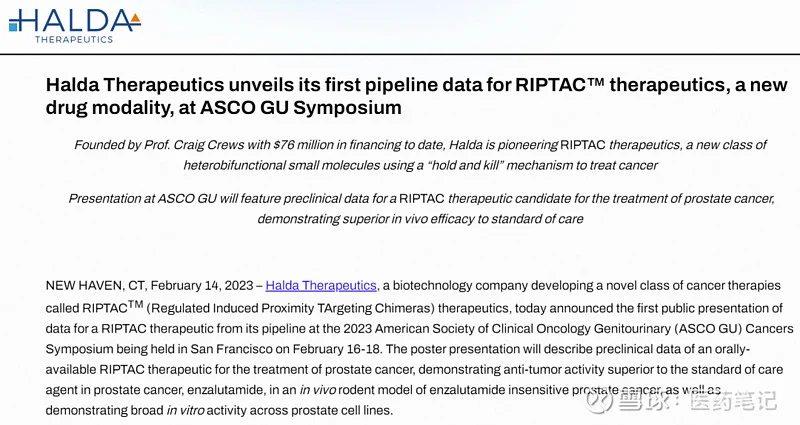J&J's $3.05 Billion Bet: Is Halda's RIPTAC Tech Worth It?
Johnson & Johnson is dropping a cool $3.05 billion to acquire Halda Therapeutics. That's a hefty sum, even for Big Pharma. The deal centers on Halda's RIPTAC (Regulated Induced Proximity Targeting Chimera) platform, specifically their lead drug HLD-0915, which is in Phase 1/2 trials for metastatic castration-resistant prostate cancer (mCRPC). The press release highlights "encouraging signs of anti-tumor activity." Okay, but what do the actual numbers say?
Halda presented Phase 1/2 data showing HLD-0915 was "well-tolerated" and showed "reductions in prostate-specific antigen (PSA) and responses by Response Evaluation Criteria in Solid Tumors (RECIST)." The key here is "encouraging signs" versus, say, "unprecedented efficacy." We’re talking about early-stage data. Let's not get ahead of ourselves.
The rationale behind RIPTAC is intriguing. It's designed to overcome cancer's resistance mechanisms by essentially "holding and killing" tumor cells. HLD-0915, for example, targets androgen receptors (AR) and BRD4, forcing them together to disrupt cancer cell function. The theory is solid, but the jump from preclinical models to human trials is always a chasm.
The Prostate Cancer Play: A Calculated Risk
The press release also mentions new prostate cancer diagnoses are projected to reach 1.7 million globally by 2030. That’s a big number—a growing market, for sure. But how much of that market is addressable by HLD-0915? mCRPC is a specific, advanced stage of the disease. How many patients will actually be eligible for this treatment? We don't have those numbers.
Johnson & Johnson expects a dilution in 2026 of $0.15 to Adjusted Earnings Per Share (EPS) due to short-term financing and a non-recurring charge related to equity awards. This suggests they're expecting the acquisition to start impacting earnings relatively quickly. But that impact is negative at first. It implies a ramp-up period before HLD-0915, or other RIPTAC programs, start generating significant revenue.
And this is the part I find genuinely puzzling. They are willing to accept a short-term earnings hit based on early trial data. The risk is high, but the potential reward is also high.

The deal also includes earlier-stage candidates for breast, lung, and other tumor types. This isn't just about prostate cancer; it's about the potential of the RIPTAC platform itself. If the technology proves to be broadly applicable, $3.05 billion could look like a bargain. If HLD-0915 is the peak, it's a massive overpayment.
Halda was founded in 2019 and has been funded by several venture capital firms. These firms aren't known for their charitable donations. They expect a return on their investment. J&J is essentially buying out these investors, giving them a substantial exit. It makes you wonder what J&J sees that the rest of the market missed or undervalued.
The Data Gap: What We Don't Know
Details on the specific Phase 1/2 data presented by Halda are scarce. The press release offers general statements, but we need to see the actual patient numbers, response rates, and duration of response. Without that granular data, it's impossible to independently assess the clinical significance of HLD-0915. (I'd love to see a waterfall plot, for instance.) According to the Halda Therapeutics Announces Acquisition by Johnson & Johnson, the acquisition is expected to close in the first half of 2025.
We also don't know the specifics of the "customary closing conditions," including the Hart-Scott-Rodino Antitrust Improvements Act review. Antitrust scrutiny is increasing, particularly in the pharmaceutical industry. There's always a chance the deal could be delayed or even blocked.
The acquisition will be accounted for as a business combination. This means Johnson & Johnson will consolidate Halda's assets and liabilities onto its balance sheet. It also means they'll need to amortize any goodwill (the excess of the purchase price over the fair value of identifiable net assets). This amortization will further impact earnings in the future.
More Hype Than Hope?
The data vacuum is deafening. The lack of concrete details makes it difficult to assess the true value of this acquisition. Is J&J making a shrewd investment in a groundbreaking technology, or are they chasing the latest biotech hype? Only time, and more data, will tell.
